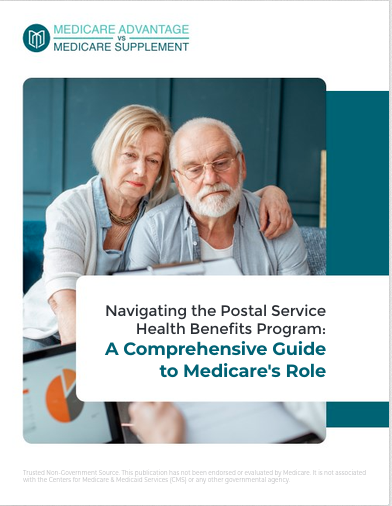Key Takeaways:
-
Medicare Part D enrollment periods are crucial for avoiding late penalties and ensuring continuous prescription drug coverage.
-
Understanding timelines and rules can save you from unexpected gaps in coverage and financial strain.
Understanding Medicare Part D Enrollment Periods
Navigating the ins and outs of Medicare Part D can feel overwhelming, but getting a firm grasp on its enrollment periods is essential. These designated windows determine when you can sign up, make changes, or drop your prescription drug plan. Missing them can lead to penalties, increased costs, or even a gap in coverage that disrupts access to essential medications. Staying informed about these periods is critical for your financial and medical well-being.
The Importance of Initial Enrollment
What is the Initial Enrollment Period (IEP)?
The Initial Enrollment Period (IEP) is your first opportunity to sign up for Medicare Part D. This window lasts for seven months—starting three months before the month you turn 65, includes your birthday month, and ends three months afterward. During this time, you can enroll in a Part D plan to cover prescription drugs.
Why This Period Matters
Enrolling during your IEP ensures you avoid the Medicare Part D late enrollment penalty. This penalty is a permanent increase in your premiums and grows the longer you delay enrolling without having creditable drug coverage. Missing your IEP can also delay when your prescription drug coverage begins, which could leave you exposed to high medication costs.
What Happens If You Miss It?
If you miss your IEP, you’ll need to wait for another enrollment period, like the Annual Enrollment Period (AEP) or a Special Enrollment Period (SEP). This could leave you without coverage for months, risking higher out-of-pocket costs for medications. Understanding your options ahead of time can help you make informed decisions and avoid unnecessary delays.
Annual Enrollment Period: Your Second Chance
When It Happens
The Annual Enrollment Period (AEP) runs from October 15 to December 7 every year. Changes made during this period take effect on January 1 of the following year.
What You Can Do During AEP
-
Switch Plans: Move from one Medicare Part D plan to another or from a Medicare Advantage plan that includes drug coverage to a standalone Part D plan.
-
Enroll for the First Time: If you missed your IEP and didn’t have creditable drug coverage, you can enroll in a Part D plan.
-
Drop Coverage: Cancel your Part D plan entirely, though this may result in penalties if you don’t have other creditable coverage.
The Consequences of Missing AEP
Failing to act during AEP means you’ll be locked into your current plan for another year unless you qualify for a Special Enrollment Period. If you’re not enrolled, you’ll have to wait until the next AEP, potentially leaving you without necessary coverage. Proactively reviewing your options during AEP can ensure your plan fits your needs and budget.
The Role of Special Enrollment Periods (SEPs)
What Triggers an SEP?
Special Enrollment Periods are triggered by specific life events, such as:
-
Moving out of your plan’s service area.
-
Losing creditable drug coverage through an employer or union.
-
Gaining eligibility for Medicaid.
Why SEPs Are Important
SEPs allow you to enroll in, switch, or drop a Part D plan outside the regular enrollment periods without incurring penalties. However, these windows are typically short—lasting only 63 days from the date of the qualifying event. Acting quickly during an SEP ensures you maintain uninterrupted coverage.
Tips for Navigating SEPs
Keep documentation of any life event that triggers an SEP, such as a letter confirming the loss of employer coverage or proof of relocation. These records can help facilitate your enrollment and avoid unnecessary delays.
Late Enrollment Penalty: What You Need to Know
How the Penalty Works
The Medicare Part D late enrollment penalty is calculated as 1% of the national base beneficiary premium for every month you went without creditable prescription drug coverage. This amount is then added to your monthly premium and remains in effect for as long as you have Part D. The longer you delay, the higher your penalty will be.
Avoiding the Penalty
To steer clear of this extra cost:
-
Enroll in a Part D plan during your IEP.
-
Maintain creditable drug coverage if delaying enrollment.
-
Use SEPs to avoid long gaps in coverage.
The Financial Impact of the Penalty
Over time, even a small monthly penalty can add up to significant extra costs. By understanding how the penalty works and taking proactive steps to avoid it, you can save yourself money in the long run.
Coverage Gaps: The Hidden Cost of Missing Deadlines
What Are Coverage Gaps?
A coverage gap occurs when you have no prescription drug plan in place. This can happen if you miss your IEP, fail to act during AEP, or lose creditable coverage and don’t use an SEP to enroll in Part D. Gaps in coverage can disrupt your access to medications and increase your healthcare expenses.
The Impact on Your Finances
Without a Part D plan, you’ll pay the full cost of your medications out-of-pocket. This can quickly become expensive, particularly for those requiring long-term or high-cost prescriptions. Additionally, you may face higher premiums and penalties when you eventually enroll.
Strategies to Avoid Coverage Gaps
Staying organized and planning ahead are your best defenses against coverage gaps. Mark key dates on your calendar, double-check deadlines, and keep track of any life events that could qualify you for an SEP.
Key Dates to Keep in Mind
-
IEP: Seven months around your 65th birthday (3 months before, the month of, and 3 months after).
-
AEP: October 15 to December 7 annually.
-
Coverage Start Date: January 1 for plans chosen during AEP.
-
SEP Deadlines: Usually within 63 days of the qualifying event.
Tips for Staying on Top of Enrollment
Mark Your Calendar
Add key enrollment dates to your calendar as reminders. Staying organized ensures you don’t miss critical deadlines. Setting digital alerts or reminders can provide extra peace of mind.
Review Your Coverage Annually
Even if you’re happy with your current plan, reviewing it during AEP is wise. Plan costs and formularies can change, affecting your out-of-pocket expenses. Comparing plans annually ensures you’re getting the best value and coverage.
Seek Professional Help
If Medicare enrollment feels confusing, consult a licensed Medicare advisor or use free government resources for guidance. They can help you understand your options and make informed decisions. Many resources are available online and through local agencies.
Staying Informed: The Key to Seamless Coverage
Monitor Policy Changes
Medicare rules and costs can change annually. Stay updated on new policies to avoid surprises and ensure your plan remains the best fit for your needs. Consider signing up for Medicare newsletters or updates from trusted sources.
Understand Creditable Coverage
If you’re delaying enrollment in Part D due to other drug coverage, confirm that your plan qualifies as creditable. Ask your employer or plan administrator for written proof to avoid penalties. Having this documentation ready can save you time and stress later.
Planning Ahead to Avoid Gaps and Penalties
The key to managing your Medicare Part D enrollment is preparation. By understanding the different enrollment periods and acting within their timelines, you can protect yourself from financial penalties and ensure uninterrupted access to prescription drugs. Take the time to learn your options, plan ahead, and make informed decisions—your health and wallet will thank you.










